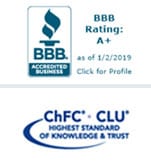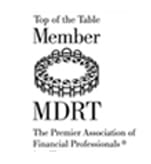Don’t let your 2017 tax refund fall victim to tax fraud. After last fall’s Equifax data breach, taking steps to protect yourself from identity theft is more important than ever. Here are four steps you can take to keep your refund—and your identity—safe.
1. File Early
Filing early is the best defense against tax identity theft. If the IRS already has your legitimate tax return, scammers will have a much harder time filing a fraudulent one. Even if you don’t have all of your paperwork yet, you can still take steps to speed up the process by getting organized in advance. Identify what documents and receipts you do have on-hand and keep them together in a clearly marked folder while you wait for the rest of your paperwork to arrive. It’s also important to make sure you keep a list of the documents you’re still waiting on so you can complete your return as soon as you get them. This will also prevent you from trying to file a return with incomplete information.
If all of this sounds overwhelming, or you have a complex return and aren’t sure what documents you need, it might be time to hire a tax preparer.
2. Watch for Red Flags
If your Social Security number or other personal information has been compromised, the IRS might pick up on the suspicious activity and alert you with certain “red flag” forms. If you receive forms from the IRS that include wages you didn’t earn, a W-2 or 1099 from an employer you don’t work for, or any of the other documents included in the IRS’s Guide to Employment-Related Identity Theft, your identity may be at risk. If you do get one of these forms, don’t include it in your tax return and alert the IRS immediately. You can also contact the Social Security Administration to review your wages.
3. Be Secure
If you e-file your taxes, make sure you have security software with firewall and anti-virus protection. Even when sending or viewing sensitive information unrelated to your tax return, make sure you always use a private, password-protected connection and never use public Wifi. Treat your tax documents and any documents with your personal information like a credit card; don’t leave them lying around in the open, and if you’re saving that information electronically as scans or digital files, they need to be encrypted.
4. Adjust Your Withholding
If you’re the victim of tax fraud or identity theft, it can take months to get your refund. According to the IRS, the average refund in 2017 was about $2,800, and the bigger the refund you’re waiting for, the more frustrating that wait will be. By adjusting your withholding, you can reduce the size of your refund, frustrating any would-be return thieves and putting more money in your paycheck year-round. To reap the full benefits, adjust your withholding so that your refund is as close to zero as possible. That way, you can make good use of your money throughout the year by saving or investing it, instead of letting Uncle Sam hold onto your money interest-free. It’s especially important to check your withholding this year because of the tax reform that passed in December. Check out the new withholding tables so you know what to expect in 2018.
Think you might already be a victim of tax fraud or identity theft? Don’t wait to take action. Use the resources below:
–IRS Tax Fraud Reporting Guide: https://www.irs.gov/individuals/how-do-you-report-suspected-tax-fraud-activity
–Federal Trade Commission’s Identity Theft Reporting: https://www.identitytheft.gov/
–IRS Phishing and Online Scam Reporting Guide: https://www.irs.gov/privacy-disclosure/report-phishing
Edited by:


Sara McKinney
saractag@gmail.com
Sara is a recent graduate of Kalamazoo College and a new addition to the Cowen Team. Her responsibilities include IT support, event planning, and general administrative assistance.




